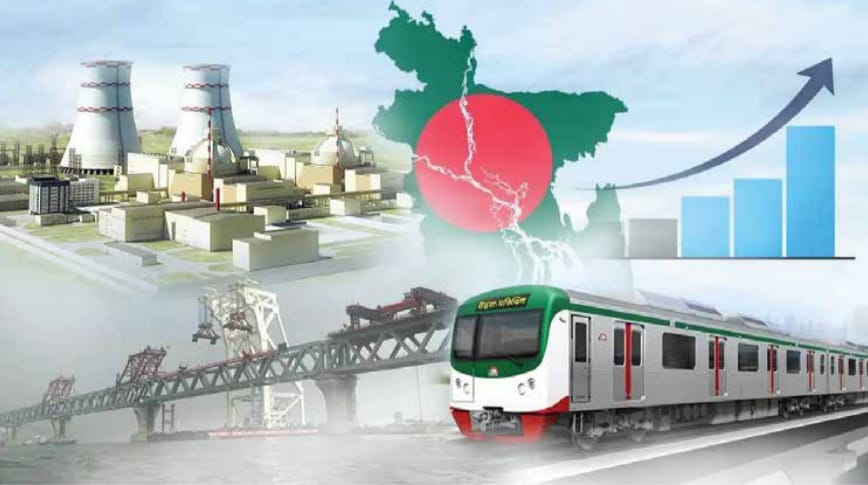The pivotal role of the communication sector in fostering economic growth and development cannot be overstated, especially when considering physical access to crucial resources and markets. A well-functioning and efficient transport system is the bedrock for sustainable economic progress. In the relentless pursuit of achieving the coveted status of a developing country, Prime Minister Sheikh Hasina, the esteemed daughter of Bangabandhu Sheikh Mujibur Rahman, has spearheaded transformative efforts alongside the Awami League-led government. Through unwavering dedication and tireless endeavors, their collaborative work has not only been instrumental in laying the groundwork for enhanced connectivity but has also translated into tangible benefits, propelling the nation forward on its path to development.
Padma Bridge: The 10.642 km Padma Bridge was inaugurated on 25 June 2022 and connected Mawa in Munshiganj and Zajira in Shariatpur District. The world records are for placing the pile into 120 to122 meters depth, Fractional pendulum bearing capacity of 10,000 tons, withstand capacity of 9 on earthquake Richter Scale, bearing weight of 10,500 metric tons between pillar and span, and river training of 14 km in Mawa and Jajira. The bridge would boost the annual national GDP by 1.32% and the southern region’s GDP by 2.5%.
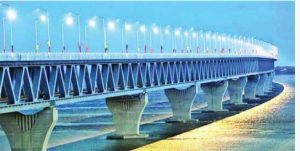
The bridge connects 21 southern districts with capital including the Port of Mongla and the Port of Payra. Before the construction of the bridge; boats, launches, and ferries were the means of communication. The bridge created new opportunities to attract investment, development, employment, and industrialization. The region has been affected by increasing climate change and water salinity. As the agricultural production in that region is under the threat of flooding, the inhabitants might live on grabbing the new opportunities created by Padma Bridge.
The rail link in the bridge made Bangladesh a sub-route of the Trans-Asian rail network and enhanced rail communication with India, Nepal, and Bhutan. Besides decreasing the congestion in Chattogram Port, the bridge and rail network would increase the cargo movement between Dhaka and Mongla Port. According to JICA (Japan International Cooperation Agency), The bridge would save travel time between the Dhaka division and the southern region which would drive the economic output of that region by 5.5%.
BEZA (Bangladesh Economic Zone Authority) already started the development of 17 economic zones in the southern region. To surge economic growth; the authority should set targets with higher priority. The business environment should be established by securing electricity, gas, water, and internal road infrastructure; access to credit should be maximized; sustainable industrialization should be ensured to balance the ecosystem; and the flow of skilled labour must be ensured by arranging proper training and development facilities.
Metro Rail: The Metro Rail project in Dhaka aims to address the city’s notorious traffic congestion issues. Spanning 20.10 km from Uttara to Motijheel, the elevated metro rail offers a reliable alternative for commuters in a city known for chaotic and congested streets. The project is named Mass Rapid Transit (MRT) Line-6 and is designed to reduce the number of vehicles on the road, providing a convenient and comfortable experience with air-conditioned trains equipped with modern amenities like Wi-Fi.
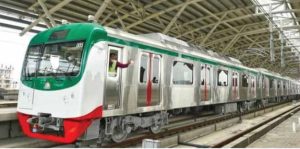
The anticipated impact of the metro rail includes a reduction in vehicle emissions and environmental pollution. According to JAICA, six metro lines could transport 5.2 million people daily, constituting over 25% of Dhaka’s current population. This could potentially lead to the removal of almost 30,000 personal cars from Dhaka streets. The time saved by commuters could be utilized productively, contributing to the progress and prosperity of the country.
However, challenges such as fixed routes, the need for skilled talent, and potential congestion at stations pose concerns for the successful implementation of the metro rail project. A study by BUET in 2018 highlighted the economic cost of traffic jams in Dhaka, amounting to $4.4 billion. Additionally, the reliability of the metro rail during adverse weather conditions and the occurrence of mechanical errors are potential drawbacks that authorities need to address. Despite these challenges, the metro rail has the potential to shape a lifestyle combining civic culture, social equity, and community orientation in Dhaka
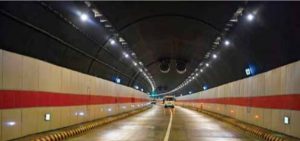
Bangabandhu Tunnel: The Bangabandhu Tunnel project, modeled after Shanghai’s “One City Two Town” concept, aims to enhance communication between Chattogram and its southern region. The main tunnel, spanning 3.43 km, along with a 5.35 km connecting road between Patenga and Anwara, has reduced the distance between Chattogram and Cox’s Bazar by 40 km. This infrastructure is crucial for linking the largest port and airport in Chattogram to facilitate economic activities.
The tunnel is expected to boost economic initiatives associated with Matarbari Deep Seaport, Maheshkhali LNG Terminal, and Banshkhali Coal Power Plants. The establishment of the China Economic Zone (CEZ) in Anwara Upazila and the upcoming Mirsarai Economic Zone (MEZ) are anticipated to attract foreign investment, stimulate economic activities, and create employment opportunities.
The tunnel, running beneath the Karnaphuli River, presents significant tourism potential, with 700 acres of land being developed for “Coastal Tourism.” Efforts to modernize Patenga beach for picnics and sports contribute to tourism sustainability. However, achieving Sustainable Development Goals by 2030 may require additional investments and new projects in the tourism sector.
EXPRESSWAYS: In 2018, a study by BUET revealed that Bangladesh faced significant productivity losses, amounting to almost five million working hours, due to severe traffic congestion in Dhaka. To address this issue, the government aimed to improve transportation infrastructure, including the construction of expressways. However, the implementation of expressways and metro rail systems has contributed to pollution reduction in Dhaka.
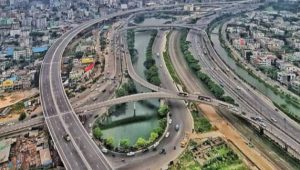
As part of a comprehensive plan, the Bangladesh government aimed to develop eight expressways by 2041. Currently, two expressways have been either fully or partially inaugurated. The Dhaka – Mawa – Bhanga expressway, spanning 55 km through Padma Bridge, connects Dhaka to Bhanga in Faridpur. This four-lane expressway is expected to extend further, linking Mongla Seaport, Payra Seaport, and Benapole Landport, thereby promoting economic growth by connecting isolated regions and ports to the capital.
The Dhaka Elevated Expressway has been partially inaugurated, covering 11.5 km out of 19.75 km from Farmgate to the Airport. This expressway benefits private cars and facilitates the swift movement of cargo-laden covered vans.
Another expressway, the Chattogram Elevated Expressway, is awaiting inauguration and spans 16.5 km, connecting Lalkhan Bazar to Shah Amanat International Airport. Additionally, expressways like Purbachal Expressway, Dhaka Bypass Expressway, and Ashulia Elevated Expressway are currently under construction.
The Terminal 3 of the Hazrat Shahjalal International Airport (HSIA): The inauguration of Terminal 3 at Hazrat Shahjalal International Airport (HSIA) marks more than just a facelift; it symbolizes a significant leap forward in terms of facilities and benefits. Unveiled by Prime Minister Sheikh Hasina on October 7, the new terminal is designed to accommodate up to 1.2 crore passengers annually, featuring enhanced cargo and cold storage facilities. Equipped with a state-of-the-art baggage handling system, arrival lounge, duty-free shop, and boarding bridges as detailed by the Civil Aviation Authority of Bangladesh (CAAB), Terminal 3 aims to elevate the airport experience. With two rapid exit taxiways covering 41,500 square meters, it streamlines aircraft movement, ensuring efficient runway usage. The expansive terminal, covering 542,000 square meters with a floor space of 230,000 square meters, houses 115 check-in counters, 66 departure immigration desks, 59 arrival immigration desks, and three VIP immigration desks. The larger transit lounge is set to cater to 40,00,000 passengers annually, further enhancing the airport’s capacity. Commencing construction in December 2019, this Tk21,300-crore project is poised to redefine the standards of Hazrat Shahjalal International Airport, providing a modern and efficient hub for air travel in Bangladesh. Currently handling around 150 flights of 30 airlines and serving 25,000 to 30,000 passengers daily, the new terminal represents a significant advancement in the nation’s aviation infrastructure.
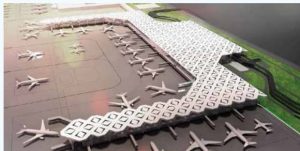
In conclusion, Bangladesh has made remarkable strides in its communication sector through the visionary projects of Padma Bridge, Metro Rail, Bangabandhu Tunnel, and Elevated Expressway. Spearheaded by Prime Minister Sheikh Hasina and the Awami League government, these initiatives signify a commitment to fostering economic growth and sustainable development. The Padma Bridge’s inauguration has not only improved connectivity but has also unlocked new opportunities for investment and development in the southern region. The Metro Rail project addresses Dhaka’s traffic congestion, providing an efficient and environmentally friendly transportation alternative. The Bangabandhu Tunnel strategically connects Chattogram with the southern region, fostering economic activities and development. The Elevated Expressway, with its partial inauguration and future plans, aims to alleviate traffic congestion in Dhaka and propel Bangladesh as a competitive player in the global supply chain. Despite challenges, these projects underscore the nation’s progress, emphasizing the need for continued strategic planning and implementation to fully realize their intended objectives.
Written by-
Md. Shahenur Islam
Deputy Secretary
Secondary and Higher Education Division,
Ministry of Education

